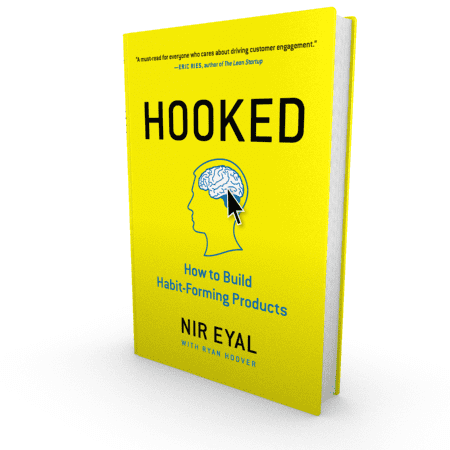Learn How To Build Habit-Forming Products
I just finished reading Hooked: How to Build Habit-Forming Products by author Nir Eyal.
I learned a lot about user psychology and habit-design while reading this book. It's definitely a must-read for every developer who wants to build a successful mobile app.
Nir Eyal writes, consults, and teaches about the intersection of psychology, technology, and business. Nir founded two tech companies since 2003 and has taught at the Stanford Graduate School of Business and the Hasso Plattner Institute of Design at Stanford.
Let me tell you why I love this book.
Usually, when you have a great idea for an app, you'll Google it and then find out that there are 128 other apps that already implemented that idea. You then start thinking about how to get something new and innovative into your app to lure users away from the competition.
This may or may not work, but according to Nir users won't jump ship that easily because they're already used to the other app and old habits die hard.
Habits are defined as behaviors done with little or no conscious thought.
So, how do you make a successful app when there is some much competition out there? The answer is: get your user "hooked", by designing your app in such a way that using it becomes a habit.
When successful, forming strong user habits can have several business benefits including: higher customer lifetime value, greater pricing flexibility, supercharged growth, and a sharper competitive edge.
###The Hook Model The Hook Model is Nir's guide to help you identify habit-forming possibilities within your app. This model has four phases:
- Trigger, an internal or external cue to the user to take action.
- Action, what the user does in anticipation of a reward.
- Variable Reward, the reward the user gets as a result of performing an action, something that scratches the user's itch.
- Investment, the time and content a user puts into a product.
Let's have a look at an example of how these hooks are implemented in Facebook.
I'm feeling bored (internal trigger) and decide to go on Facebook (action) to see what my friends have been posting (variable reward). I post a message myself (investment) and get a notification that someone replied to it (external trigger) and that sets off another cyle in the Hook Model.
Nir explains these concepts in detail in the book and also tells you how very successful companies like Facebook, Twitter and Instagram implement this model.
If you have half an hour to spare, watch this video from The Next Web 2014 Conference where Nir talks about The Hook Model.
###Final Thoughts It's no secret that people are becoming more and more addicted to their phones. Everywhere you go you see people constantly with their head down looking at the screen. This is in part a result of habit-forming apps.
I am not interested in creating an app that becomes addictive to users. The apps I like to build are mostly productivity-related apps, so the intention there is to get something done efficiently and get on with your life.
However, you can still use these techniques to create an app that keeps users engaged and creates a positive change in their lives.
I took a lot of notes and will definitely be rereading this book again soon. But more importantly, I will be implementing these habit-forming techniques in the next app I'm building and will post about that as soon as I can.
Do you already use any of these techniques in your app? Let me know in the comments, I'd love to hear how other developers use this in their apps.
